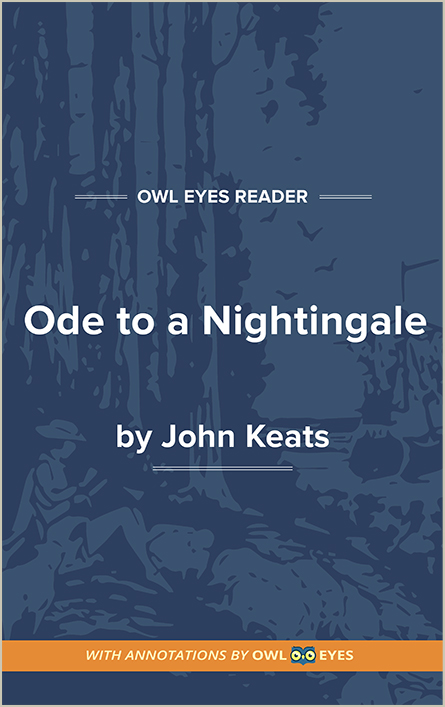Study Guide
Analysis Pages
Summary
John Keats’s “Ode to a Nightingale” begins with no introduction: The poet describes himself in a profound state of mental torment, as if drugged into a sleep state, engrossed in an unseen nightingale’s song. The setting is unspecified, but readers can imagine the poet in a garden or perhaps in the woods, during springtime, when nightingales nest. The poet addresses the bird directly, a poetic device known as apostrophe, stating his admiration for the nightingale’s happiness. At this point the nightingale suggests to the reader that it embodies, at minimum, two symbolic meanings: The bird’s song suggests that the bird represents art, while the poet’s description of the bird as being like a Greek wood nymph suggests that the bird symbolizes nature.
In stanza two, the poet yearns for an imaginative identification with the bird, perhaps assisted by wine, by which he can escape the ordinary world and disappear into the happier world represented by the nightingale. In stanza three, the bird’s world is contrasted to all the pain—such as aging, disease, and despair—that defines human experience. In line 26, Keats could be alluding to the death of his brother Tom in 1818.
In the fourth stanza, the poet rejects the escape that alcohol can provide, preferring the flight of poetry. Overall, through his desire for symbolic union with the bird, stanzas two through four outline the poet’s desire to escape the human condition. The language of this stanza seems to suggest a change in the poet’s mood, as he reflects on the nightingale’s song. By the end of stanza four, the poet is aware of being separate from the nightingale.
In the fifth stanza, the poet experiences a failure of...
(The entire page is 447 words.)
Owl Eyes subscribers get unlimited access to our expert annotations, analyses, and study guides on your favorite texts. Master the classics for less than $5/month!

